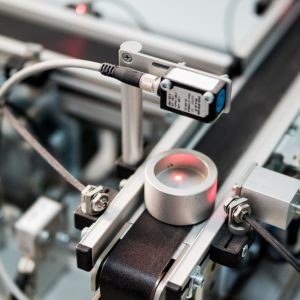The front is directly linked to the SOA trend and users’ fears about complexity, as well as a lack of understanding about how to make the transition from today’s client-server architecture to process-centric SOA.
SAP’s mission is to simplify its Enterprise Services Architecture on three fronts – usage, ownership and deployment via mySAP ERP 2005. That suite, which has just gone on general release, is the entry point to SAP’s SOA implementation. Alongside the suite, SAP is also delivering various tools designed to make it easier for organizations to consume services, and an SOA.
With the majority of its customer base still on R/3 SAP has good reason to push. In 18 months time, Shai Agassi, president of the product and technology group, expects 6000 customers to have migrated to ERP 2005 and fifteen months after that is hopeful that the total will have reached 15,000. By the end of 2009 he believes the R/3 base will down to a low single-digit percentage. The total SAP customer base is around 30,000.
Migration can be counted in two ways – contract and physical migration. During a Q&A session at Sapphire, CEO Henning Kagermann said that contract migration was moving at a fast pace and only around 4,500 customers had not migrated to new contracts. By 2009 he thinks the number should be down to a few hundred.
Physical migration depends on each customers’ situation and tends to occur a year to 18 months after contract conversion, he said. Based on that scenario he expects a lot of physical migration to occur this year. His rough estimate is that by 2009, 90% of the customer base will gave undergone a contract migration and about 60% will have completed or be in the process of undergoing a physical migration.
The rate of migration is critical to SAP because a large proportion of its future revenue prospects such as Duet, analytics, and xApps, rely on up- and cross-sell opportunities enabled through the service-enabled mySAP ERP suite and the ESA platform.
With the issue of how to deploy SOA a major concern, part of SAP’s work has been to try and simplify deployment. In its book, mySAP ERP 2005 is the core augmented by a series of SOA appliances.
The first of these is an Enterprise SOA appliance, which is currently being used by early adopters. The combined hardware and software device acts as a platform for running xApps alongside an organization’s core suite.
It sits next to the business suite, explained Agassi, and can be plugged in and used in situations where an organization wants to keep its backbone stable while simultaneously making use of xApps.
Available on blades or disk, the preloaded and preconfigured appliance allows any number of xApps to be deployed on the appliance, which can be plugged into the core ERP 2005 suite, enabling the xApps to run alongside the core business suite. It can also be used as a sandbox for development and testing purposes.
Although the appliance can be connected to the main SAP system it does not call for changes and does not touch the core. That is part of its value said Peter Zencke, member of SAP’s executive board and responsible for applications research, including the BPP, it that it can be used side by side, without destabilizing the core system. It could also be used for leading edge experiments or as a working platform for projects that are not ready for full deployment.
According to Zencke the appliance is an alternative deployment model. By pre-configuring and tailoring it for a specific task, much of the complexity can be taken out. In that sense it is similar to on demand, in that on demand also represents a deployment model geared towards simplicity. SAP’s approach is: one architecture, one solution but different options to run it, he said.
The development was driven by the needs of SAP’s partners who were working on composite applications but is available to SAP customers too. Although the Enterprise SOA Appliance is only available for composite applications, Zencke said there was no reason why it could not do the same for its more mainstream applications in the future.
SAP has other deployment aids including an xApp hub that will contain all its xApps – currently numbering over 200 – plus partner developed ones, in a ready to deploy form. The concept is similar to Salesforce.com’s AppExchange.
A plug and go ESA Discovery Server is also available, containing all the tools needed to build ESA applications, preloaded in a ready to go development environment, with quarterly updates including new tools and samples. Agassi said SAP unofficially refers to as an Epod. We are trying to makes things simple for everybody, he said.






